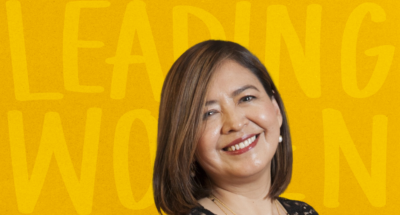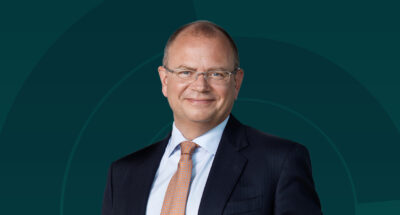
How to teach an entrepreneur to let go
Biotech entrepreneur Juana Lucia Flores-Candia explains that technology has changed the way to mentor chief executives. Here are her three ways to get entrepreneurs to focus....

by Ask Agger, Jennifer Jordan Published 5 August 2021 in Leadership • 6 min read
Leading change has always been a hazardous affair and grimy work. Most organizations fall short on a majority of their strategic change efforts, and the failure to efficiently lead transformations is the number one career killer for CEOs. Recent examples are Robert Swan stepping down as CEO for Intel or Jim Hackett leaving Ford after three years at the helm.
Many of the challenges that accompany leading and managing change are often blamed on the “frictions” of the physical organization – from the trouble of cascading a shared vision and clear priorities through numerous layers of management to the burden of relocating people and introducing new ways of working across different countries and sites. But, with the transition from physical to virtual working, will these challenges dissipate, and change become easier to manage? Or will these challenges associated with change in the physical world merely be replaced with new ones in the virtual world?
The rapid shift we’ve experienced in the last year-plus helps give us some insight into these questions. When the global COVID-19 pandemic hit in the spring of 2020, it accelerated the long-term trend of virtualization. Companies were catapulted forward in digital maturity, and suddenly remote collaboration and virtual teams were the new normal. Change happened overnight. The good news is that many companies came through this rapid adaptation with relative ease. But at the same time, the virtual world created (and continues to create) some unique challenges – especially when it comes to managing change.
Based on our work with hundreds of executives leading change across industries, countries, and cultures, the short answer is that leading change will continue to be hard, but in ways that are unique from the challenges of change in the physical world. We outline three primary paradoxes to help leaders better lead change virtually.
In the virtual world, it takes longer to realize that team members have steered the change bus far off course or even driven it off the road’
It is a classic change management mistake to implement too many and too large transformations simultaneously. For example, it is said that Dutch Bank ING’s challenges with its digital transformation originated from trying to do too many changes at once, including to integrate banking systems simultaneously across countries and regions. Such an overly ambitious approach to change only leads to fatigue, cynicism and discouragement across the organization. And with this approach, changes are either slowed down to a crawl or they are only implemented half-heartedly without any long-term impact.
Without the friction and limitation of the physical workspace, it is tempting to conclude that virtual organizations have a greater appetite for change and that they can adapt faster to it (e.g., teams can be redistributed with the click of a mouse, and new ways of working are only a system upgrade away). But, in the virtual world, leaders need to be even more cautious not to overload their colleagues.
In the physical world, the informal day-to-day interaction with co-workers creates a “social slipstream” that helps the organization to navigate high complexity and anchor new behavior and culture; team members help each other to make sense of ongoing changes and catch up with new ways of working. But in a virtual world, organizations can’t rely on this “social slipstream” effect, and there is a high risk that teams will get trapped in the quagmire of the “change storm”.
In short, in the virtual world, organizations must run short, “fat” changes rather than long, “thin” projects. New changes need to make sense and be manageable to the colleagues carrying them out; finish one transformation sprint before embarking on the next journey. For example, the industry leading logistics company, DSV Panalpina, has fine-tuned a highly efficient merger model that focuses on the rapid integration of a selected number of critical systems and workflows. This successful sprint-based approach shortens the period of post-merger uncertainty and prevents daily operations from being drowned out by too many simultaneous transformations. The latest acquisition of Kuwait-based Agility Logistics will show if the company can continue its pristine track record in the increasingly post-COVID virtual world.
Empowerment is a buzz word of modern organizations – both virtual and physical. It’s essentially the idea that leaders cascade their power to those lower down the hierarchy, while retaining their accountability for the outcome. Theoretically, this way of working is excellent for both the development of employees, as well as getting tasks off leaders’ desks. But, in order for this form of employee autonomy to lead to the desired outcome, a clear frame must be in place. That is, empowerment without strong alignment, both on direction and on critical ways of working, is a sure path to failure. In order for employees to have freedom, they also need a frame around it.
The need for a clear frame is no different in the physical compared to the virtual world. However, frames need to be even “thicker” when working virtually. As it is near-to-impossible to micromanage in the virtual world, clarity on the task, boundaries, and desired outcomes at the start are more critical in virtual contexts. Otherwise, leaders run the risk of empowering employees to discover that they have gone in a completely different direction than intended. And, in the virtual world, it takes far longer for a leader to realize that his or her team members have steered the change bus far off course or even driven it completely off the road.
One example is the facility management and workplace experience company, ISS, which, with more than 400,000 people on staff across more than 30 countries, is one of the world’s largest private employers. In late 2020, the company launched a new OneISS strategy, with the clear aim of increasing alignment and synergies across the organization. The end goal of the strategy was to turbocharge local empowerment, agility and the entrepreneur spirit, which is the DNA of the company culture. The first steps on that journey were to strengthen alignment across regions and business units so that all were “on the same page” regarding the path forward and new ways of working. As employees were located across the globe, a lot of this aligning had to be done virtually. Essentially, they had to first reduce short-term autonomy in order to increase autonomy in the long-term.
Remote work can be efficient in teams that engender mutual trust, but remote work is much more difficult (if not impossible) when trust has yet to be established. This makes cross-team collaboration and the implementation of new ways of working – key components to change initiatives – very difficult to successfully accomplish. Thus, in the virtual world, leaders must be even more conscious to nurture trust before instances where it is crucially needed. For example, one leader with whom we worked was struggling to get his team on board a change initiative related to new ways of working with clients and logging their data. He had traditionally been a command-and-control leader and now he was finding it challenging to garner the trust necessary to get employees to volitionally follow his vision. He tried to adjust his style to be more inclusive, but not only was it a strain for him to personally pivot, but at this point, his employees were cynical about the intent behind his newly found inclusivity. The change that he was showing should have been demonstrated way before he needed something from his employees.
This example highlights one of the greatest routes to building trust: reciprocity. That is, giving something to another which then elicits the feeling of obligation in the other party to give in kind. But reciprocity only works when that initial “gift” is given without the impression that something is explicitly wanted in return. Otherwise, such behavior can backfire, as it appears calculative and instrumental. The initial “trust gift” must be given carte blanche.
The need for building trust is true for the physical world, as well as the virtual. However, in the virtual world, building trust is even more of a challenge and behaviors perceived to be originating from the desire to “get something from the other” are met with even greater resistance and cynicism. Thus, in order to successfully lead change, leaders in the virtual world need to be building up a bank of trust, which they can then draw from later. They need to “lead from trust” rather than “lead for trust”.
In sum, in the highly disruptive world in which leaders are working, change will be inevitable. And when leading change virtually, leaders must be mindful to do less to get more done, limit autonomy to boost, autonomy, and give trust when it feels least needed.

CEO at Workz
Ask Agger heads the Copenhagen-based change agency Workz, which specializes in change management and the design of game-based tools for training and involvement. With an academic background in political science and sociology, he has spent more than 20 years as a consultant and adviser to a wide range of industry-leading companies. A pioneer of game-based learning, he has written or contributed to several books and articles on gamification, storytelling, and behavioral design.

Social psychologist and Professor of Leadership and Organizational Behaviour at IMD
Jennifer Jordan is a social psychologist and Professor of Leadership and Organizational Behavior at IMD. Professor Jordan’s teaching, research, and consulting focus on the areas of digital leadership, ethics, influence, and power. Professor Jordan has received specialized training and certifications in lie and truthfulness detection, as well as in conflict resolution within organizations. She is Program Director of the Leadership Skills for the Digital Age program and the Leadership Essentials Course.

20 November 2023 • by Juana Lucia Flores-Candia in Leadership
Biotech entrepreneur Juana Lucia Flores-Candia explains that technology has changed the way to mentor chief executives. Here are her three ways to get entrepreneurs to focus....

17 November 2023 • by Michael D. Watkins in Leadership
Executives winning promotion must navigate their transition with a balance of humility, respect for legacy, and a vision for the future....

14 November 2023 in Leadership
Henrik Andersen discusses with IMD President Jean-François Manzoni the challenges of navigating supply chain disruptions and soaring raw material costs over the past three years, and why he changed the wind farm...

6 November 2023 • by Brenda Steinberg, Michael D. Watkins in Leadership
Strategic thinking is key to career advancement – but communicating it to others is just as important. Ask yourself these 10 questions to find more ways to demonstrate your strategic abilities to...
Explore first person business intelligence from top minds curated for a global executive audience